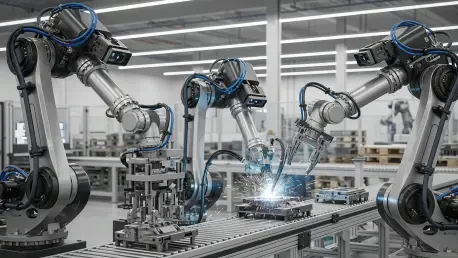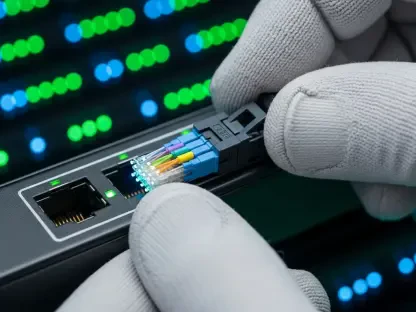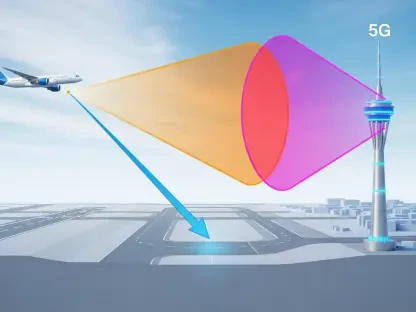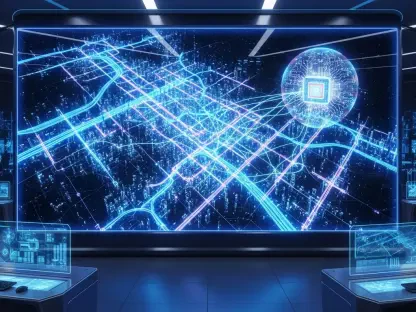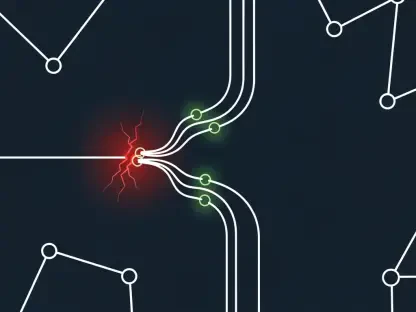What happens when machines not only follow instructions but also think, adapt, and act in real time on the factory floor, transforming the way industries operate? This isn’t a far-off vision but a reality unfolding today, driven by physical AI—a technology that merges digital intelligence with physical action. Nokia, a titan in network solutions, is at the forefront of this shift, investing a staggering $4 billion in AI manufacturing and research in the United States. This bold move signals a seismic change for industries ranging from manufacturing to public safety, promising smarter, safer, and more efficient operations.
Why Physical AI Demands Attention Today
The industrial world stands on the brink of a transformation that could redefine productivity. Physical AI, unlike traditional automation, empowers machines to perceive their surroundings, reason through challenges, and execute decisions autonomously. Nokia’s massive investment underscores the urgency of this technology, positioning it as a catalyst for industries grappling with inefficiencies and safety concerns. The potential to have robots collaborating seamlessly with humans isn’t just exciting—it’s essential for staying competitive in a rapidly evolving market.
This urgency stems from the sheer scale of impact. Reports from the World Economic Forum highlight that AI-driven autonomy could boost industrial output by over 30% in key sectors within the next few years. Nokia’s focus on integrating physical AI with robust networks ensures that this potential doesn’t remain theoretical but becomes a practical tool for businesses. The time to understand and adopt this technology is now, as trials and implementations are already reshaping operational landscapes.
The High Stakes of a Connected Industrial Era
In an era where every second counts, the stakes for industries adopting physical AI are monumental. The ability of machines to make split-second decisions can mean the difference between a safe workplace and a catastrophic failure. Nokia’s Chief Technology and AI Officer, Pallavi Mahajan, emphasized during a recent capital markets event that physical AI isn’t merely about automation—it’s about creating adaptive systems that respond to dynamic environments. For sectors like transportation and manufacturing, this adaptability is non-negotiable.
Global trends amplify these stakes. With automation adoption accelerating—evidenced by a projected 40% increase in robotic systems by 2027, according to industry forecasts—the demand for reliable connectivity has never been higher. Network failures in such scenarios could lead to dire consequences, such as an autonomous vehicle misjudging a hazard. Nokia’s commitment to ultra-low latency networks addresses this critical need, ensuring that physical AI systems operate without dangerous hiccups.
Nokia’s Network Innovations Powering Physical AI
Nokia’s role in the physical AI revolution lies in its groundbreaking network technologies, which serve as the backbone for autonomous systems. In industrial automation, physical AI enables robots to tackle intricate tasks alongside humans, such as managing heavy machinery with precision. Nokia’s 5G networks, designed for minimal latency, allow these robots to make decisions in microseconds, reducing risks like operational delays or safety oversights in bustling factory settings.
Beyond factories, autonomous systems like drones and self-driving vehicles rely on uninterrupted connectivity to function safely. A single network glitch could result in a drone losing control mid-flight, with potentially disastrous outcomes. Nokia’s advancements, including the exploration of 6G capabilities, provide the always-on connection these applications demand. This ensures that mission-critical operations remain seamless, even under intense conditions.
Additionally, Nokia targets high-stakes sectors like railways, public health, and the military with tailored private networking solutions. While not directly building robots, the company supplies essential radio and core network components that enable physical AI integration. Current trials suggest that AI-driven devices could reach widespread use within one to three years, highlighting Nokia’s strategic position as an enabler of this transformative technology.
Industry Leaders Weigh in on Opportunities and Risks
Insights from Nokia’s Pallavi Mahajan paint a vivid picture of physical AI’s potential. “This technology marks a turning point for industrial automation, allowing intelligent robots to work hand-in-hand with humans,” Mahajan noted. This perspective aligns with broader industry views, as the World Economic Forum projects that physical AI could redefine workplace autonomy, enhancing both efficiency and collaboration across sectors.
However, challenges loom large. Mahajan cautioned that even a slight network delay could jeopardize safety, particularly if a robot fails to react promptly to a hazard. Early adopters in manufacturing echo this concern, balancing enthusiasm for efficiency gains with the need for rigorous safety measures. Nokia’s $4 billion investment in AI research and development reflects a determined effort to address these risks, prioritizing reliability as a cornerstone of their network solutions.
The consensus among experts underscores a dual narrative of promise and caution. While the transformative power of physical AI is undeniable, ensuring robust infrastructure remains a pressing priority. Nokia’s focus on overcoming latency and reliability hurdles positions it as a key player in navigating these complex challenges, paving the way for safer human-robot interactions.
Preparing Industries for a Physical AI Future
For businesses ready to embrace physical AI, strategic preparation is vital, and Nokia’s network innovations offer a critical foundation. A starting point is assessing existing network infrastructure for latency and reliability issues. Partnering with Nokia to implement 5G solutions can enable real-time AI applications, particularly in high-risk settings like factories or logistics hubs where delays are not an option.
Safety must also take center stage. As robots integrate into human workspaces, establishing fail-safe mechanisms and redundant systems becomes essential. Nokia’s mission-critical networking ensures continuous connectivity, preventing disruptions that could endanger workers or halt production. This approach provides a safety net for industries venturing into uncharted technological territory.
Finally, scalability and collaboration are key to long-term success. Businesses should initiate pilot programs to test physical AI applications while planning for broader implementation, drawing on Nokia’s private networking models for complex sectors like railways. Engaging with Nokia and other tech leaders can also yield valuable insights, potentially adapting innovations from fields like medicine to industrial contexts. These steps create a roadmap for harnessing physical AI’s potential while minimizing risks.
Reflecting on a Groundbreaking Journey
Looking back, Nokia’s bold $4 billion investment in AI manufacturing and research has set a powerful precedent for industrial transformation. The journey of physical AI, supported by cutting-edge networks, has begun to reshape how industries operate, blending human ingenuity with machine intelligence. Pallavi Mahajan’s vision of robots as true collaborators has sparked a movement toward safer, more efficient workplaces.
As this era unfolds, the focus shifts to actionable next steps. Industries are encouraged to prioritize network upgrades, invest in safety protocols, and explore scalable AI solutions with partners like Nokia. By fostering collaboration and innovation, businesses can navigate the evolving landscape of physical AI, turning challenges into opportunities for growth and resilience.
